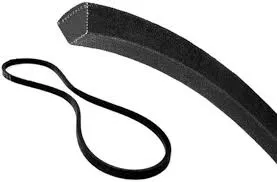- Arabic
- French
- Russian
- Spanish
- Portuguese
- Turkish
- Armenian
- English
- Albanian
- Amharic
- Azerbaijani
- Basque
- Belarusian
- Bengali
- Bosnian
- Bulgarian
- Catalan
- Cebuano
- Corsican
- Croatian
- Czech
- Danish
- Dutch
- Afrikaans
- Esperanto
- Estonian
- Finnish
- Frisian
- Galician
- Georgian
- German
- Greek
- Gujarati
- Haitian Creole
- hausa
- hawaiian
- Hebrew
- Hindi
- Miao
- Hungarian
- Icelandic
- igbo
- Indonesian
- irish
- Italian
- Japanese
- Javanese
- Kannada
- kazakh
- Khmer
- Rwandese
- Korean
- Kurdish
- Kyrgyz
- Lao
- Latin
- Latvian
- Lithuanian
- Luxembourgish
- Macedonian
- Malgashi
- Malay
- Malayalam
- Maltese
- Maori
- Marathi
- Mongolian
- Myanmar
- Nepali
- Norwegian
- Norwegian
- Occitan
- Pashto
- Persian
- Polish
- Punjabi
- Romanian
- Samoan
- Scottish Gaelic
- Serbian
- Sesotho
- Shona
- Sindhi
- Sinhala
- Slovak
- Slovenian
- Somali
- Sundanese
- Swahili
- Swedish
- Tagalog
- Tajik
- Tamil
- Tatar
- Telugu
- Thai
- Turkmen
- Ukrainian
- Urdu
- Uighur
- Uzbek
- Vietnamese
- Welsh
- Bantu
- Yiddish
- Yoruba
- Zulu
Jul . 30, 2024 04:46 Back to list
Understanding the Benefits and Applications of Micro Rib V Belts for Enhanced Performance
Understanding Micro Rib V Belts A Comprehensive Overview
Micro rib V belts, often referred to as micro ribbed belts or simply ribbed belts, are essential components in mechanical systems, particularly in automotive and industrial applications. These specialized belts are designed to efficiently transmit power between pulleys while providing enhanced grip and reduced slippage, making them a preferred choice for various machines and engines. This article delves into the features, benefits, and applications of micro rib V belts, highlighting why they are vital for modern engineering.
Design and Structure
Micro rib V belts are characterized by their unique ribbed design, which consists of a series of small, longitudinal ribs along the belt's inner surface. This intricate design not only increases the surface area in contact with the pulleys but also enhances the overall flexibility of the belt. The ribs allow for better traction, reducing the chances of slippage, which is a common issue with traditional flat belts. Furthermore, the V shape of these belts provides a wedging effect that improves grip around the pulleys, enabling the transmission of higher torque levels.
Advantages of Micro Rib V Belts
1. Enhanced Performance The ribbed design allows micro rib V belts to handle higher loads and torque capacities than standard belts. This performance boost makes them particularly suitable for high-speed machinery and automotive applications where power transfer efficiency is paramount.
2. Reduced Slippage One of the significant benefits of micro rib V belts is their reduced tendency to slip. The increased contact area and the unique design ensure that these belts maintain a firm grip on the pulleys, leading to improved efficiency in power transmission.
3. Noise Reduction Compared to traditional belts, micro rib V belts often produce less noise during operation. This is particularly beneficial in applications where noise reduction is critical, such as in HVAC systems and household appliances.
micro rib v belts

4. Longer Lifespan Constructed from durable materials, micro rib V belts tend to have a longer operational life. Their robust design minimizes wear and tear, resulting in lower replacement costs and decreased maintenance frequency.
5. Versatility These belts are available in various sizes and designs, making them compatible with a wide range of machines and systems. They can be found in applications ranging from automotive engines to industrial conveyor systems.
Applications
Micro rib V belts have a broad spectrum of applications across different industries. In the automotive sector, they are commonly used in serpentine belt systems that power various accessories, including alternators, water pumps, and air conditioning units. Their ability to withstand high torque and speed makes them ideal for modern engines that require reliable performance under demanding conditions.
In industrial settings, micro rib V belts are utilized in conveyor systems, textile machinery, and HVAC applications, among others. The ability to maintain efficiency and reduce noise makes them a valuable component in any mechanical system requiring reliable power transmission.
Conclusion
In conclusion, micro rib V belts are an indispensable part of many modern mechanical systems. Their innovative design offers numerous advantages, including enhanced performance, reduced slippage, and noise reduction, making them suitable for a wide range of applications. As industries continue to evolve and demand more efficient and reliable solutions, the importance of micro rib V belts in maintaining optimal performance cannot be overstated. Whether in automotive engineering or industrial machinery, these belts play a critical role in ensuring that systems operate smoothly and efficiently.
-
Korean Auto Parts Timing Belt 24312-37500 For Hyundai/Kia
NewsMar.07,2025
-
7PK2300 90916-T2024 RIBBED BELT POLY V BELT PK BELT
NewsMar.07,2025
-
Chinese Auto Belt Factory 310-2M-22 For BMW/Mercedes-Benz
NewsMar.07,2025
-
Chinese Auto Belt Factory 310-2M-22 For BMW/Mercedes-Benz
NewsMar.07,2025
-
90916-02660 PK Belt 6PK1680 For Toyota
NewsMar.07,2025
-
drive belt serpentine belt
NewsMar.07,2025

